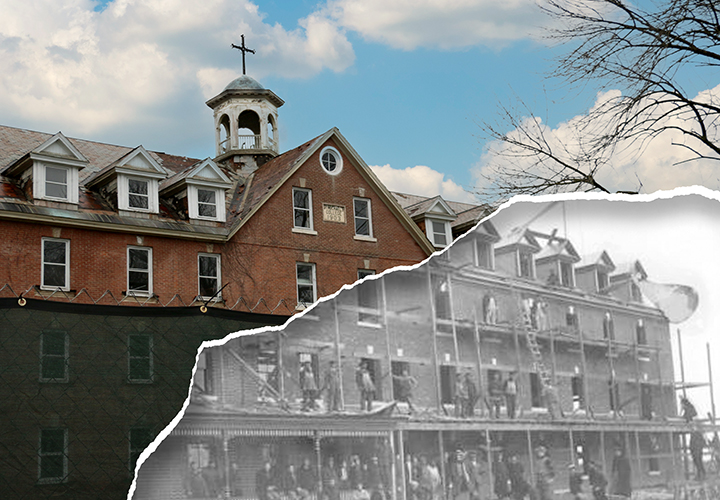
By Peyton Edwards
Staff Writer
Founders hall has always been a monumental place on campus and even after the building is gone, the memories will still remain. “I recall having to walk around my room in a blanket often in the dead of winter even when we thought we had the heat on,” said Josh Kessler ’04, director of athletics communications. Kessler lived in Founders Hall for two years when he attended St. Michael’s. Since 1904, Founders has been a critical part of the College’s roots.
“I’m sad to see it go because it’s been such an important building not only in my history but in the history of the college, it truly is a landmark,” Kessler said.
The decision to demolish Founders began in 2011, when asbestos was found in the building. “The rehab costs were so significant that it didn’t make any sense,” said Joel Ribout, director of facilities. The facilities crew had to start moving people out of living spaces there, but administrative offices still remained on the first and second floors.
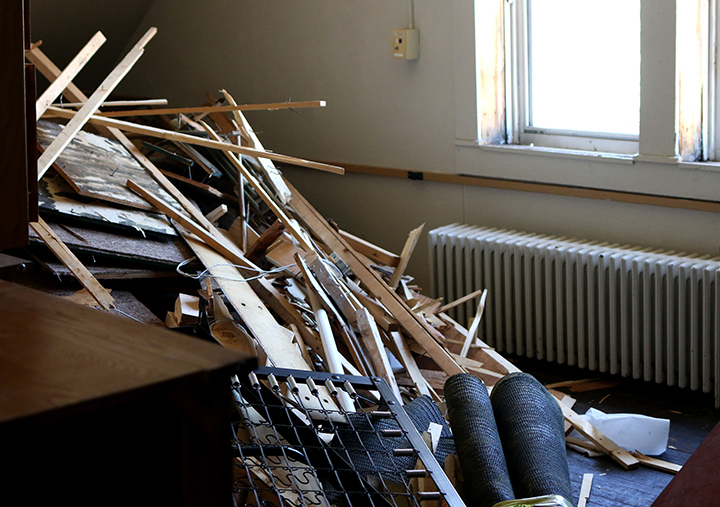
A pile of debris and wood planks inside the old presidents office on the first floor of Founders Hall on April, 22.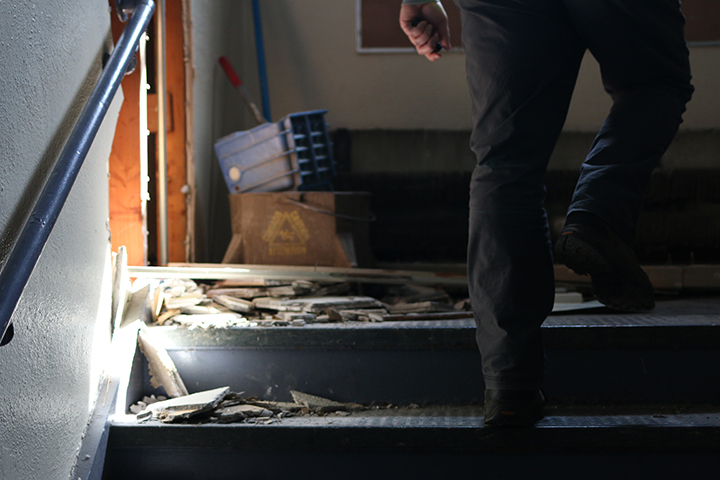
Joel Ribout walking up the stairs between the second and third floor on the north stair case of Founders Hall on April, 22.
Because Founders is a historical building, facilities had to receive approval from the Vermont Division of Historic Preservation, a Vermont agency that governs the preservation of historic sites and keeps the history alive. The demolition was approved in 2015, and the President’s Office was relocated in August of 2019, Ribout explained.
“It just always reminds you that you are part of something when you’re there,” said Heidi St. Peter, assistant dean for advising and student development. St. Peter did not live in Founders, but many of her friends did.
Many alumni, faculty, and staff at the College are melancholy that such a historic part of the College will be demolished.
“I kissed my wife for the first time in Founders,” said Rob Robinson ’91, director of finance. Robinson’s wife of 30 years lived in Founders, along with a few of his friends. “I had a friend who lived in one of the small rooms on the fourth floor and MAN was it hot,” Robinson said.
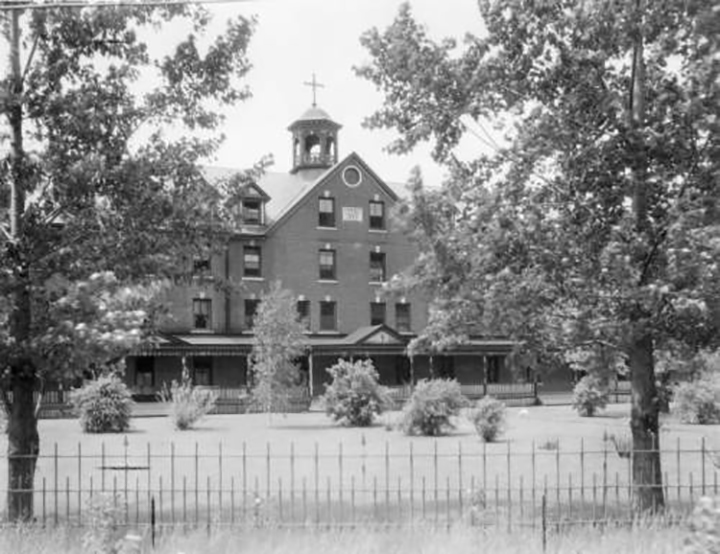
Front view of Founders Hall (1920-1930) with porch attached.
“When I think about Founders, I think about it as being a hive of college activity for a long time,” said Chris Kenny ’86, director of athletics.
When Founders was in use, the stairs leading up to the building were bustling with foot traffic from all faculty, staff, and students. Before the college added more buildings, every single part of Saint Michael’s was under the roof of Founders. The cafeteria, the library, athletic offices, classrooms, and even a small gym in the basement, he explained. “They had these gigantic radiators in the building in each of those rooms so it was plenty toasty in there,” Kenny said.
Founders is “the original building that [the priests] bartered and traded for so that they could start their school,” St. Peter said. “This is why it is such a vital part of the College.”
After she graduated from Saint Michael’s in 1996, St. Peter worked in the alumni office that had a direct view of the cupola top of Founders. The cupola has been a significant symbol of the college ever since it was constructed. “There is something about that connection to the tradition and to the past, but truly, you are standing on other people’s shoulders,” she said.
Being so close to people that have lived there when they were students here, some from the 40s and 50s, there are many sentimental stories and memories that show that this building has touched so many lives, St. Peter explained.
“In order to get onto my loft I had to climb onto my desk, and to get off of my loft. I actually had to use [my roommate’s] stairs on his loft,” Kessler recalls. He and his roommate lived in a double room in Founders. He reminisced about how small their living space was and how they combated it. “Neither of us kept our closet doors on, we took them off because there was really no swinging room for the doors,” Kessler said.
“The neat thing about Founders too is those rooms, they weren’t cookie cutter, they were all so different, especially the fourth floor rooms with the dormer windows and the slanted roofs,” Kenny recalls. The dormer windows on the fourth floor of Founders face the view near the natural area and although they can be pretty to look at from the outside, they made the space in the dorm rooms feel much smaller.
Because Founders has been in the same location since 1904, there are many quirks to the building that only people who have lived there or had memories from there can recall. “It’s a little creepy up there. With other staff people, we would take a walk up to the third and fourth floor just to, you know, hear the ghosts,” St. Peter said.
There was never a shortage of rumors of the haunted rooms in Founders because of its age, Kessler said. “The only one that I remember was something about a girl dying in one of the rooms and she haunted the room,” he recalls.
Although the building will soon be demolished, the cupola that sits on top of the building, a few signs, granite and marble window sills, and plaques will be preserved to keep the memory alive.
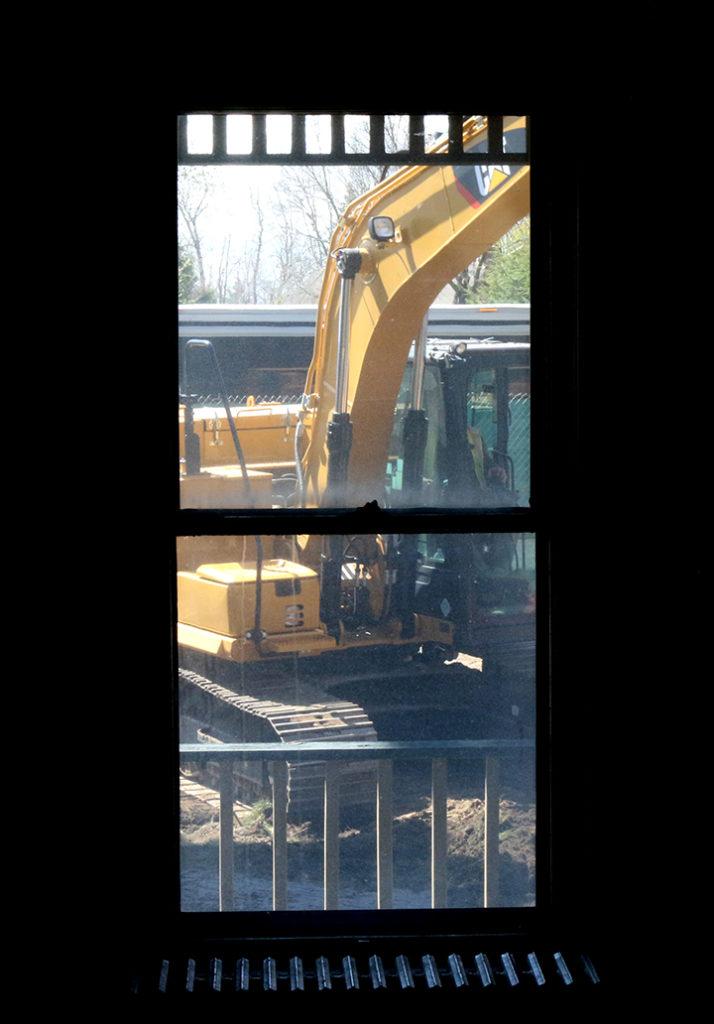
Inside of Founders Hall on April 22, looking outside the first floor window to the demolition site.
When the building is demolished, the cupola that was once the tallest point on the building will be put on the ground in the middle of where the building used to be, surrounded by landscaping and a few benches. The sign that reads “Saint Michael’s 1903” now facing the view near the entrance to the natural area will be placed near the cupola to preserve the memory of the building that started it all, Ribout explained.
“When it’s gone, we are all still here, the stories are all still here, what we are founded for and what we are here for, it’s the same,” St. Peter concluded.
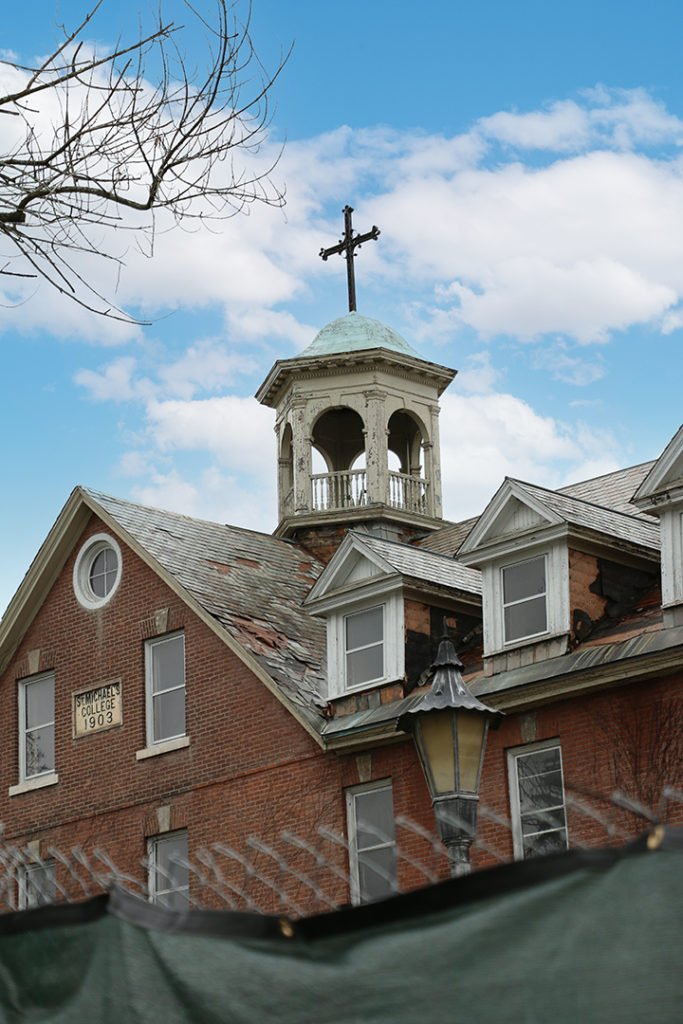
Close up of the Founders Hall cupola.

